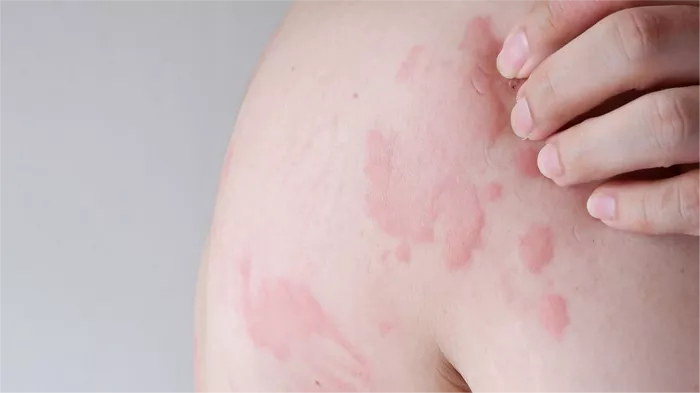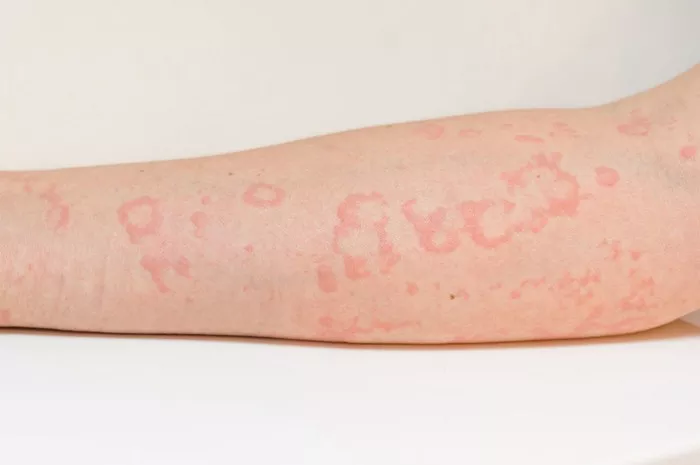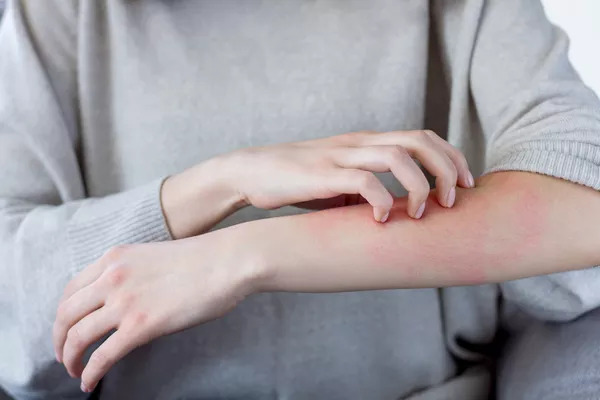A histamine rash is a skin reaction caused by the release of histamine in the body. Histamine is a chemical that plays a crucial role in the immune response. When released, it can lead to various symptoms, including skin rashes. Understanding what a histamine rash looks like can help you identify it and seek appropriate treatment.
What is Histamine?
Histamine is a naturally occurring substance in the body. It is involved in several functions, including:
Regulating immune responses: Histamine helps protect the body from allergens and pathogens.
Controlling gastric acid secretion: It plays a role in digestion.
Transmitting signals in the brain: Histamine affects sleep-wake cycles and memory.
When the body encounters allergens or irritants, histamine is released. This release can lead to various allergic reactions, including skin rashes.
Causes of Histamine Rash
Histamine rashes can be triggered by several factors:
Allergies: Common allergens include pollen, pet dander, dust mites, and certain foods.
Infections: Some viral and bacterial infections can cause histamine release.
Medications: Certain drugs, including antibiotics and non-steroidal anti-inflammatory drugs (NSAIDs), can trigger histamine release.
Environmental factors: Heat, sweat, and insect bites can also lead to histamine reactions.
SEE ALSO: Why Do Hives Show Up in Different Places?
How Does a Histamine Rash Develop?
When histamine is released in response to an allergen or irritant, it causes blood vessels to expand and become more permeable. This leads to:
Increased blood flow: This causes redness in the affected area.
Swelling: Fluid leaks from the blood vessels into the surrounding tissues.
Itching: Histamine stimulates nerve endings in the skin, leading to an itching sensation.
Characteristics of a Histamine Rash
Histamine rashes can vary in appearance, but they often share common characteristics:
1. Redness
The affected skin typically appears red due to increased blood flow. This redness can be localized or spread over a larger area, depending on the severity of the reaction.
2. Raised Hives
Histamine rashes often manifest as raised welts or hives (urticaria). These hives can be:
Flat-topped: Some hives may appear as raised bumps with smooth surfaces.
Round or oval: They can vary in shape and size, sometimes resembling mosquito bites.
3. Itching
One of the most prominent symptoms of a histamine rash is itching. The affected area may feel intensely itchy, leading to scratching, which can worsen the rash.
4. Swelling
In addition to redness and itching, the skin may become swollen. This swelling occurs due to fluid accumulation in the tissues surrounding the affected blood vessels.
5. Duration and Distribution
Histamine rashes can appear suddenly and may last for a few hours to several days. They often resolve on their own without treatment. The distribution of the rash can vary; it may affect specific areas or spread across the body.
Common Locations for Histamine Rashes
Histamine rashes can occur anywhere on the body. However, they are commonly found in:
Arms and legs: Hives often appear on the extremities.
Torso: The trunk can also be affected.
Face: Some people may develop rashes on their face, particularly around the eyes and lips.
How to Identify a Histamine Rash
Identifying a histamine rash can be straightforward if you pay attention to the symptoms and appearance. Here are some tips:
Look for hives: Check for raised, itchy welts on the skin.
Observe the color: The affected skin will often be red.
Note the sensation: If the rash is itchy, it could indicate a histamine reaction.
Monitor the duration: If the rash appears suddenly and lasts for a short time, it may be histamine-related.
Diagnosis of Histamine Rashes
If you suspect you have a histamine rash, it’s essential to consult a healthcare professional for proper diagnosis. The diagnosis typically involves:
Medical history: Your doctor will ask about your symptoms, triggers, and any recent exposures to allergens or irritants.
Physical examination: A visual examination of the rash will help the doctor determine its characteristics.
Allergy testing: In some cases, skin or blood tests may be necessary to identify specific allergens.
Treatment Options for Histamine Rashes
Treating a histamine rash focuses on relieving symptoms and addressing the underlying cause. Here are some common treatment options:
1. Antihistamines
Antihistamines are the primary treatment for histamine rashes. They work by blocking the effects of histamine, reducing itching and swelling. Common over-the-counter antihistamines include:
- Diphenhydramine (Benadryl)
- Cetirizine (Zyrtec)
- Loratadine (Claritin)
2. Corticosteroids
For more severe rashes, a healthcare provider may prescribe topical corticosteroids. These medications help reduce inflammation and itching.
3. Cold Compresses
Applying cold compresses to the affected area can provide temporary relief from itching and swelling. This method works by cooling the skin and constricting blood vessels.
4. Avoiding Triggers
Identifying and avoiding triggers is crucial in preventing future histamine rashes. Keep a diary of your symptoms and potential allergens to help identify patterns.
When to See a Doctor
Most histamine rashes are mild and resolve on their own. However, seek medical attention if you experience:
Severe symptoms: If the rash is widespread and accompanied by difficulty breathing or swelling of the face or throat, seek emergency care.
Persistent rash: If the rash does not improve with over-the-counter treatments or lasts longer than a few days, consult a healthcare professional.
Signs of infection: If the rash becomes redder, warmer, or develops pus, it may be infected.
Preventing Histamine Rashes
To reduce the risk of developing a histamine rash, consider these preventive measures:
Identify allergens: Work with an allergist to identify specific allergens that trigger your reactions.
Avoid known triggers: Stay away from known allergens, such as certain foods, pet dander, or pollen.
Manage stress: Stress can exacerbate allergic reactions, so practice relaxation techniques.
Stay cool: Heat can trigger histamine release, so try to keep cool, especially in hot weather.
Conclusion
A histamine rash can be uncomfortable, but understanding its characteristics can help you identify and manage it effectively. If you experience symptoms, consider antihistamines and consult a healthcare professional for further guidance. By recognizing the triggers and taking preventive measures, you can reduce the likelihood of future outbreaks and maintain better skin health.
Related topics:


























